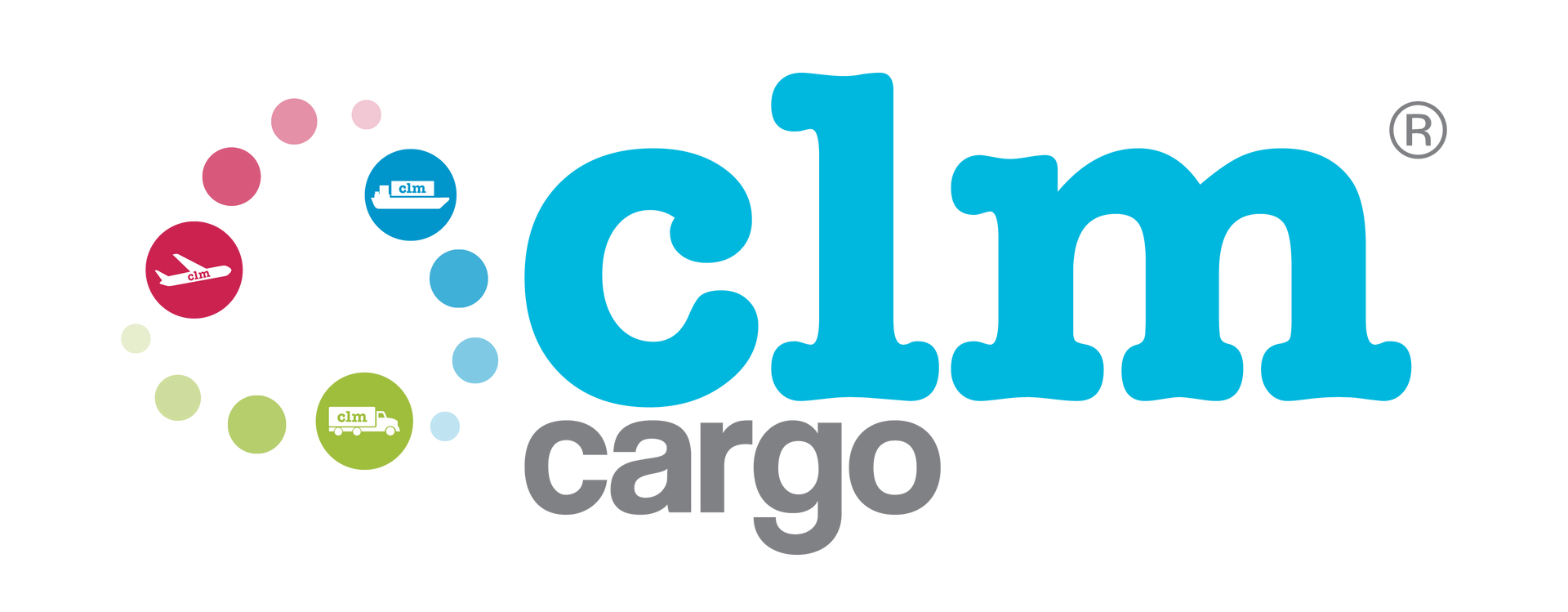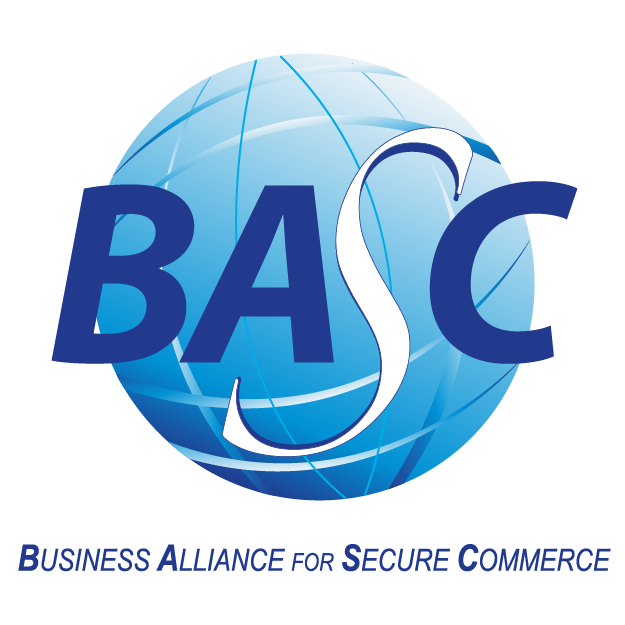Export From United States To Sweden

As a marketing manager in a logistic transport agency, you understand the complexities and challenges involved in international shipping. In this blog post, we will guide you through the process of exporting from the United States to Sweden, providing valuable insights and tips to ensure a smooth and efficient logistics operation. Whether you're a seasoned exporter or just starting out, this comprehensive guide will equip you with the knowledge needed to navigate the intricacies of the USA-Sweden trade route.
I. Understanding the USA-Sweden Trade Relationship
- Overview of Bilateral Trade:
Start by examining the overall trade volume and value between the United States and Sweden. Look for information on the types of goods or services commonly exchanged, such as machinery, vehicles, pharmaceuticals, chemicals, and agricultural products. This overview will help you understand the scale and importance of the trade relationship.
- Identifying Key Industries and Products:
Research the key industries driving trade between the two countries. Identify the sectors where there is a high demand for U.S. exports in the Swedish market. This information will help you focus your efforts and tailor your marketing strategies to meet the needs of Swedish buyers. Consider factors such as economic trends, consumer preferences, and local regulations that might influence the demand for specific products.
- Analyzing Market Trends and Opportunities:
Stay informed about the latest market trends and developments in Sweden. Monitor economic indicators, industry reports, and market research to identify emerging opportunities. For example, look for growing sectors, new market niches, or changes in consumer behavior that could create demand for specific goods or services. Understanding these trends will allow you to align your export strategy with the evolving needs of the Swedish market.
By comprehending the USA-Sweden trade relationship, you can make informed decisions about the products or services you wish to export and develop a targeted marketing approach. This knowledge will also help you identify potential partners, understand the competitive landscape, and position your company effectively in the Swedish market.
II. Researching Export Regulations and Documentation
- Export Control Laws and Regulations:
Familiarize yourself with the export control laws and regulations that govern the export of goods from the United States to Sweden. In the United States, the main regulatory authority is the Bureau of Industry and Security (BIS), which enforces the Export Administration Regulations (EAR). These regulations control the export of goods with potential military, dual-use, or strategic significance. Determine if your products fall under any export control classifications and understand the specific requirements, restrictions, or licensing obligations associated with them.
- Export Licenses and Permits:
Understand the role of export licenses and permits in the export process. Certain goods may require an export license or permit from the relevant government agencies before they can be exported. Research the specific licensing requirements for your products and their destination in Sweden. Determine if you need to obtain any export licenses or permits and ensure that you initiate the application process well in advance to avoid any delays in shipment.
- Documentation Requirements:
Learn about the documentation required for successful exports from the United States to Sweden. Common export documents include:
- Commercial Invoice: A detailed invoice that provides information about the exported goods, their value, and the terms of sale.
- Packing List: A detailed list that specifies the contents, quantities, and packaging details of each shipment.
- Certificate of Origin: A document that certifies the country where the goods were produced or manufactured. It may be required for certain products to qualify for preferential trade agreements or customs purposes.
- Bill of Lading/Airway Bill: A transportation document that serves as evidence of the contract of carriage and contains details about the goods being shipped.
- Export Declaration: Documentation that provides information to the customs authorities about the goods being exported. This declaration is typically filed through the Automated Export System (AES) in the United States.
- Insurance Documents: Proof of insurance coverage for the goods during transportation.
Ensure that you understand the specific content, format, and any additional requirements for these documents in both the United States and Sweden. Adhering to proper documentation procedures will help prevent any customs delays or issues during the export process.
III. Choosing the Right Mode of Transportation
- Evaluate the advantages and disadvantages of different transportation modes:
Air Freight: Air transportation offers speed and reliability, making it ideal for time-sensitive or high-value goods. Consider the size and weight of your shipment, as air freight can be relatively expensive for large or heavy cargo.
Sea Freight: Shipping goods by sea is often more cost-effective for larger shipments and bulk cargo. It's suitable for goods with longer lead times and less urgency. Consider transit times, port locations, and any specific requirements for shipping containers or packaging.
Land Transportation: Depending on the geographical location and proximity to Sweden, land transportation via truck or rail can be a viable option. Evaluate the distance, transit times, and any potential border crossings or customs procedures involved.
- Evaluating Factors.
Consider various factors to determine the most suitable mode of transportation:
- Cost: Compare the transportation costs associated with each mode. Take into account freight rates, fuel surcharges, handling fees, and any additional charges for services such as customs clearance or inland transportation.
- Transit Time: Assess the urgency of your shipment and the desired delivery timeframe. Air freight generally offers the fastest transit times, while sea freight and land transportation may have longer lead times.
- Shipment Size and Nature: Evaluate the size, weight, and characteristics of your goods. Fragile or perishable items may require special handling or temperature-controlled transportation, which can impact your choice of mode.
- Customs Considerations: Understand the customs procedures and requirements associated with each transportation mode. Consider factors such as customs clearance time, documentation, and potential customs duties or taxes.
- Selecting Reliable Carriers and Freight Forwarders:
Once you have decided on the most appropriate mode of transportation, choose reliable carriers and freight forwarders to handle your shipments. Research and compare different service providers, considering their track record, experience, network coverage, and customer reviews. Look for providers with expertise in handling shipments to Sweden and a proven record of timely and secure delivery.
IV. Packaging, Labeling, and Customs Compliance
- Packaging Requirements:
Determine the packaging requirements for your specific goods. Consider factors such as the nature of the product, its fragility, and any special handling or storage conditions. Ensure that your packaging provides adequate protection during transportation to prevent damage or spoilage. It's also important to comply with any regulations related to packaging materials, such as restrictions on wood packaging materials (ISPM-15) for international shipments.
- Labeling and Marking:
Proper labeling and marking of your export shipments is crucial for efficient customs clearance and accurate delivery. Key considerations include:
- Product Information: Clearly label each package with detailed product information, including the item name, quantity, and any relevant product codes or identifiers.
- Shipping Marks: Apply shipping marks on the outer packaging to identify the consignee, shipper, and any other pertinent details. These marks help ensure that the shipment is easily identified and routed correctly.
- Country of Origin: Include the country of origin label on the packaging or shipping documents. This information is necessary for customs compliance and may impact import duties or preferential trade treatment.
- Hazardous Materials: If your goods are classified as hazardous materials, ensure compliance with relevant regulations, including proper labeling and documentation according to international standards such as the UN Globally Harmonized System (GHS).
- Customs Compliance:
Ensure compliance with customs regulations in both the United States and Sweden. Key considerations include:
- Tariff Codes: Determine the appropriate Harmonized System (HS) codes for your goods. These codes classify products for customs purposes and determine the applicable duties and taxes.
- Product Certifications: Identify any specific certifications or standards required by Swedish authorities for your goods. These may include safety, quality, or environmental certifications.
- Customs Documentation: Prepare the necessary customs documentation, such as the commercial invoice, packing list, and any additional documents required by customs authorities. Ensure accuracy and completeness to prevent delays or customs issues.
- Export Declarations: File the required export declarations, such as the Electronic Export Information (EEI) through the Automated Export System (AES) in the United States, to provide information on the exported goods to customs authorities.
V. Managing Freight Forwarding and Customs Procedures
- Role of Freight Forwarders:
Engage the services of a reputable freight forwarder who specializes in international shipping and has experience with exporting to Sweden. Freight forwarders act as intermediaries between exporters and carriers, handling various logistics tasks. Their services may include arranging transportation, managing documentation, coordinating customs clearance, and providing supply chain visibility. Collaborate closely with your chosen freight forwarder to ensure effective communication and coordination throughout the export process.
- Preparing Documentation for Customs Clearance:
Work closely with your freight forwarder to prepare the necessary documentation for customs clearance. Key documents typically include:
- Commercial Invoice: A detailed invoice that includes information about the goods, their value, and terms of sale.
- Packing List: A comprehensive list detailing the contents, quantities, and packaging of each shipment.
- Bill of Lading or Airway Bill: Transportation documents that serve as evidence of the contract of carriage and contain information about the goods being shipped.
- Export Declaration: Documentation that provides customs authorities with information about the goods being exported. In the United States, this declaration is typically filed through the Automated Export System (AES).
- Certificate of Origin: A document that certifies the country where the goods were produced or manufactured. This may be required for customs purposes or to qualify for preferential trade agreements.
Ensure the accuracy and completeness of all documentation to avoid customs delays or issues. Your freight forwarder can assist in preparing and verifying the required documentation.
- Navigating Customs Procedures:
Understand the customs procedures involved in exporting from the United States to Sweden. This includes complying with Swedish customs regulations, completing any necessary customs forms, and providing required information about the goods. Key aspects of customs procedures may include:
- Customs Duties and Taxes: Determine the applicable duties and taxes for your goods based on the Harmonized System (HS) codes and the customs valuation methods. Be prepared to pay any applicable fees or taxes to facilitate customs clearance.
- Customs Clearance Process: Familiarize yourself with the customs clearance process in Sweden, including any specific requirements or inspections that may be conducted. Your freight forwarder can guide you through the process and liaise with customs authorities on your behalf.
- Customs Brokerage Services: Consider engaging the services of a customs broker who specializes in Sweden to help ensure compliance with customs regulations, facilitate smooth clearance, and handle any customs-related issues that may arise.
VI. Ensuring Efficient Supply Chain and Inventory Management
- Supply Chain Optimization:
Evaluate and optimize your supply chain to ensure smooth operations and timely delivery of goods. Consider the following aspects:
- Supplier Management: Maintain strong relationships with your suppliers to ensure a reliable and consistent supply of goods. Communicate your export requirements and collaborate to meet quality standards, delivery timelines, and any specific documentation needs.
- Transportation Planning: Coordinate transportation activities to optimize efficiency and reduce costs. Consider factors such as shipment consolidation, route optimization, and mode selection based on cost, transit time, and customer requirements.
- Warehouse Management: Efficiently manage your warehouse or distribution center to ensure proper storage, handling, and inventory control. Implement effective inventory management techniques, such as just-in-time (JIT) or vendor-managed inventory (VMI), to minimize holding costs and avoid stockouts or overstocking.
- Demand Forecasting and Planning:
Accurately forecast demand for your products in the Swedish market to optimize inventory levels and meet customer expectations. Utilize historical sales data, market trends, and customer insights to anticipate demand fluctuations. Collaborate with your sales team and customers to gather information and adjust production and inventory levels accordingly. This will help you avoid stockouts, reduce excess inventory, and optimize cash flow.
- Collaboration and Communication:
Establish effective communication and collaboration channels with relevant stakeholders, including suppliers, freight forwarders, customs brokers, and customers. Proactive communication ensures that all parties are aligned, potential issues are addressed in a timely manner, and expectations are managed effectively. Regularly update and share information regarding order status, shipment tracking, and any changes in the supply chain to ensure transparency and minimize disruptions.
- Technology and Automation:
Leverage technology and automation tools to streamline supply chain and inventory management processes. Implement inventory management systems, enterprise resource planning (ERP) software, or supply chain management (SCM) platforms to enhance visibility, track inventory levels, and automate routine tasks. Utilize data analytics to gain insights into supply chain performance, identify areas for improvement, and make data-driven decisions.
VII. Key Considerations for Incoterms and Payment Methods
- Payment Methods:
Select appropriate payment methods that are mutually agreed upon by you and your Swedish customers. Common payment methods for international trade include:
- Letter of Credit (L/C): A letter issued by a bank that guarantees payment to the exporter upon presentation of specified documents within a certain timeframe. L/Cs provide security to both the exporter and the importer.
- Documentary Collection: A payment method where the exporter's bank collects payment from the importer's bank against the presentation of specified documents. There are two types: documents against payment (D/P) and documents against acceptance (D/A).
- Advance Payment: In this method, the importer makes payment in advance before the goods are shipped. It offers security to the exporter but may pose a risk to the importer.
- Open Account: An arrangement where the exporter ships the goods and invoices the importer, who is expected to make payment at a later agreed-upon date. This method involves a higher level of trust between the parties.
Consider factors such as the level of trust with your customer, the nature of the goods, and the risk tolerance of both parties when choosing the appropriate payment method.
- Currency Exchange:
Manage currency exchange to mitigate exchange rate risks and ensure efficient financial transactions. If you and your Swedish customer use different currencies, consider the following options:
- Currency Hedging: Utilize financial instruments such as forward contracts or options to hedge against potential currency fluctuations.
- Currency Conversion: Engage with a reputable financial institution or currency exchange service provider to convert currencies at competitive rates.
Stay updated on currency exchange rates and consult with financial experts or institutions to make informed decisions regarding currency exchange.
- Trade Finance and Insurance:
Consider utilizing trade finance and insurance options to mitigate financial risks associated with exporting. Trade finance solutions, such as export financing or export credit insurance, can provide working capital, protect against non-payment or political risks, and facilitate smoother transactions. Consult with financial institutions or specialized trade finance providers to explore suitable options for your export transactions.
- Compliance with International Finance Regulations:
Ensure compliance with international finance regulations and laws, such as anti-money laundering (AML) and know-your-customer (KYC) requirements. Be aware of any specific regulations or restrictions related to financial transactions between the United States and Sweden, and adhere to them to avoid any legal issues or penalties.
VIII Overcoming Language and Cultural Barriers:
- Language Considerations:
Recognize that English may not be the first language for all your Swedish counterparts. Consider the following strategies to overcome language barriers:
- Translation Services: Engage professional translation services to accurately translate important documents such as contracts, invoices, and product information. Ensure that translations are of high quality and culturally appropriate.
- Bilingual Staff or Partners: If feasible, have bilingual staff members who can facilitate communication between your organization and Swedish counterparts. Alternatively, consider partnering with local representatives or agents who are fluent in both English and Swedish.
- Clear Communication: When communicating in English, use clear and concise language, avoid jargon, and confirm understanding by encouraging feedback and asking for clarification when needed.
- Cultural Understanding:
Develop cultural intelligence and understanding of Swedish business practices to navigate cultural differences effectively. Consider the following cultural aspects:
- Punctuality and Planning: Swedes value punctuality and planning. Respect deadlines and be well-prepared for meetings and negotiations.
- Direct Communication: Swedes tend to communicate in a direct and straightforward manner. Be concise, avoid exaggeration or excessive sales pitches, and maintain a professional and respectful tone.
- Building Relationships: While Swedes appreciate professionalism, they also value building personal relationships based on trust and mutual respect. Take the time to establish rapport and invest in relationship-building activities.
- Consensus Decision-Making: Swedes prefer reaching decisions through consensus and collaboration. Be prepared for a participatory decision-making process and be open to discussing different perspectives.
- Business Etiquette: Familiarize yourself with Swedish business etiquette, including appropriate greetings, business card exchange, and dining customs. Respect cultural norms to demonstrate professionalism and courtesy.
- Cross-Cultural Communication:
Enhance cross-cultural communication by being mindful of cultural differences and adapting your communication style accordingly:
- Active Listening: Practice active listening by demonstrating interest, asking clarifying questions, and paraphrasing to confirm understanding.
- Non-Verbal Communication: Pay attention to non-verbal cues such as body language and facial expressions, as they can convey important messages in intercultural communication.
- Patience and Flexibility: Be patient and flexible in your approach, especially when misunderstandings arise. Seek clarification and strive to find mutually acceptable solutions.
- Seek Local Expertise:
Consider engaging local consultants, cultural advisors, or business partners who have in-depth knowledge of the Swedish market and culture. They can provide valuable insights, bridge cultural gaps, and help navigate business practices effectively.
IX Leveraging Market Entry Strategies and Trade Associations:
- Market Entry Strategies:
Develop a market entry strategy specifically tailored to the Swedish market. Consider the following approaches:
- Direct Exporting: Sell your products directly to Swedish customers or businesses. This approach requires establishing distribution channels, building local networks, and understanding the local market dynamics.
- Indirect Exporting: Work with intermediaries, such as agents, distributors, or resellers, who have an established presence in the Swedish market. These partners can help navigate local regulations, reach customers, and handle logistics.
- Joint Ventures or Partnerships: Consider collaborating with local Swedish companies through joint ventures or partnerships to leverage their market knowledge, distribution networks, and customer base. This approach can help mitigate risks and accelerate market entry.
- E-commerce: Explore opportunities to sell your products online through e-commerce platforms that are popular in Sweden. This allows for a direct connection with customers and provides flexibility in reaching a wider audience.
Evaluate the advantages and challenges of each strategy based on your product, industry, resources, and target market. Conduct market research to understand the preferences, needs, and purchasing behavior of Swedish customers.
- Trade Associations and Chambers of Commerce:
Leverage the resources and support provided by trade associations and chambers of commerce that focus on U.S.-Swedish trade relations. These organizations can offer valuable market insights, networking opportunities, business matchmaking services, and access to local events and trade shows. They can also provide guidance on industry-specific regulations, business practices, and market trends. Engage with relevant trade associations and chambers of commerce to enhance your market knowledge and establish connections with potential partners or customers.
- Market Research and Analysis:
Conduct thorough market research and analysis to identify market opportunities, assess competition, and understand customer preferences in the Swedish market. Consider factors such as market size, growth potential, consumer trends, and regulatory requirements. Research local competitors, their offerings, pricing strategies, and distribution channels to gain a competitive edge. Identify gaps in the market that your products or services can fill, and tailor your marketing and sales strategies accordingly.
- Marketing and Promotional Activities:
Develop a comprehensive marketing and promotional plan to create awareness and generate interest in your products or services. Consider cultural nuances and local preferences when crafting marketing messages and materials. Leverage various marketing channels such as digital marketing, social media, trade shows, and industry publications to reach your target audience. Collaborate with local marketing agencies or professionals who have a deep understanding of the Swedish market to ensure effective messaging and positioning.
X Emerging Trends and Future Opportunities
- Market Research and Analysis:
Continuously conduct market research and analysis to stay updated on the latest trends and opportunities in the Swedish market. Keep an eye on factors such as:
- Consumer Preferences: Monitor shifting consumer preferences, purchasing behavior, and emerging trends in product demand. Stay informed about new product categories, eco-friendly or sustainable products, and innovations in the market.
- Technological Advancements: Stay abreast of technological advancements relevant to your industry. Consider the impact of automation, artificial intelligence, Internet of Things (IoT), and other disruptive technologies on supply chain management, logistics, and customer engagement.
- Regulatory Changes: Stay informed about any regulatory changes, trade policies, or agreements between the United States and Sweden that may impact your export operations. Stay compliant with evolving regulations and identify opportunities that arise from changing trade dynamics.
- Industry-specific Trends:
- Pay attention to industry-specific trends that may present opportunities for growth.
For example:
- E-commerce Growth: Monitor the growth of e-commerce in Sweden and explore ways to expand your online presence or optimize your e-commerce strategy. Consider leveraging digital marketing, social media platforms, and online marketplaces to reach a wider customer base.
- Sustainable Practices: Consider incorporating sustainable practices into your operations and products. Embrace environmentally friendly packaging, energy-efficient processes, or ethical sourcing practices, as Swedish consumers have a strong preference for sustainability.
- Value-added Services: Identify opportunities to provide value-added services that complement your core offering. For example, offering customization options, after-sales support, or localized customer service can differentiate your business and enhance customer satisfaction.
- Collaboration and Partnerships:
Explore collaborations and partnerships with local Swedish companies, research institutions, or startups that are at the forefront of emerging trends. Collaborating with innovative organizations can help you gain insights into market trends, access new technologies, and expand your product or service offerings.
- Continuous Learning and Adaptation:
Encourage a culture of continuous learning within your organization. Stay updated on industry publications, attend relevant conferences or seminars, and engage in networking activities. Foster an environment where employees are encouraged to share insights and ideas for adapting to emerging trends and opportunities.
Exporting from the United States to Sweden can be a lucrative venture, but it requires careful planning, adherence to regulations, and efficient logistics management. By following the steps outlined in this comprehensive guide, you can navigate the complexities of the USA-Sweden trade route and position your business for success in the Swedish market. Remember, partnering with an experienced logistics provider can greatly enhance your export capabilities and ensure a seamless supply chain from start to finish.
















